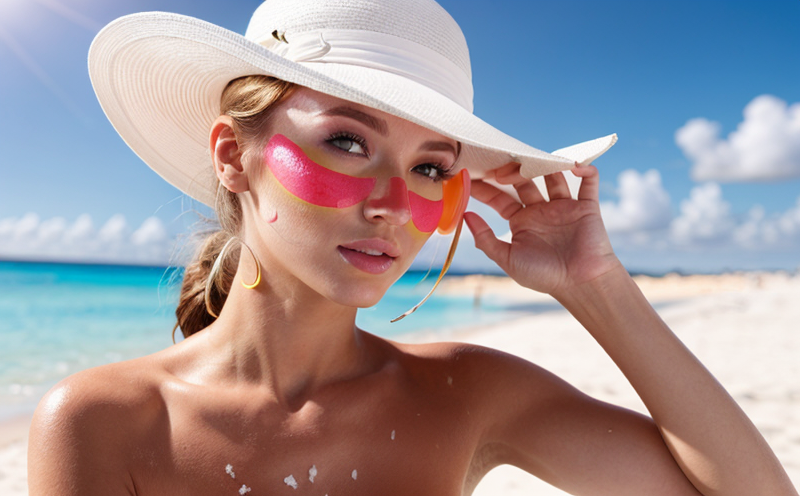Broad Spectrum Validation for Sunscreen Products
The importance of broad spectrum validation in sunscreen products cannot be overstated. As we navigate through a world increasingly exposed to ultraviolet (UV) radiation, the efficacy and safety of sunscreens have become critical considerations for both consumers and manufacturers alike.
Broad spectrum validation ensures that a sunscreen product effectively protects against both UVA and UVB rays. UVA rays penetrate deeper into the skin, contributing to premature aging and wrinkles, while UVB rays are primarily responsible for sunburns. Ensuring broad spectrum coverage is essential not only for maintaining product efficacy but also for compliance with international standards.
The testing process involves rigorous laboratory procedures that simulate real-world exposure conditions. Specimen preparation typically includes applying the sunscreen to a standardized test substrate, exposing it to controlled UV radiation, and then measuring its ability to block both UVA and UVB wavelengths effectively. This is often done using spectrophotometric techniques or other specialized instrumentation.
The standards that guide this testing are international in scope, ensuring that all products meet the highest global safety and efficacy benchmarks. For instance, ISO 24625 specifies methods for determining the broad-spectrum UV protection factor (UVA/UVB) of sunscreens, while ASTM D7079 provides guidelines for measuring sunscreen resistance to water and sweat.
Given the complexity of these tests, it’s crucial that they are conducted by experienced laboratories with state-of-the-art equipment. Compliance officers and quality managers must ensure that their products meet not only regulatory requirements but also consumer expectations regarding safety and effectiveness. R&D engineers play a pivotal role in optimizing formulas to achieve broad spectrum protection while maintaining comfort and ease of use.
Testing protocols are designed to mimic various environmental conditions, including different geographic locations with varying UV levels. This ensures that the sunscreen’s performance is consistent across diverse climates and settings. The results provide valuable insights into how well the product performs under realistic conditions, which in turn helps manufacturers make informed decisions about formulation adjustments.
The process also involves detailed documentation of test procedures, equipment calibration, and data analysis to ensure transparency and reproducibility. This is particularly important for compliance with regulations such as those set forth by the FDA or EU directives on cosmetics safety and efficacy.
Applied Standards
The testing of sunscreen products against broad spectrum validation follows several internationally recognized standards, each providing specific methodologies and criteria for evaluating UV protection. ISO 24625 is a key standard that outlines procedures to determine the broad-spectrum UV protection factor (UVA/UVB) of sunscreens. This standard ensures that the product’s effectiveness in blocking harmful UVA and UVB rays is accurately assessed.
ASTM D7079 offers guidelines for measuring sunscreen resistance to water and sweat, which are crucial factors affecting a sunscreen’s performance under real-world conditions. These tests help determine how well the product remains effective after exposure to moisture or physical activity.
EN 13462-2 is another important standard that specifies methods for determining the amount of UVA radiation transmitted through sunscreens, providing additional insight into the sunscreen’s ability to protect against aging effects caused by long-term UVA exposure. Compliance with these standards not only ensures product safety but also enhances consumer trust and satisfaction.
IEC 62785-1 sets out requirements for solar simulators used in UV protection factor determination, ensuring that the equipment employed during testing meets stringent quality control measures. This is vital for obtaining reliable and consistent results across different batches of sunscreen products.
Why Choose This Test
Selecting broad spectrum validation as a critical step in your product development or regulatory compliance strategy offers numerous advantages. Firstly, it ensures that your sunscreen product is safe and effective across various environments and conditions. By validating the product against UVA and UVB radiation, you can guarantee its ability to protect users from both immediate burns and long-term skin damage.
Secondly, compliance with international standards like ISO 24625 and ASTM D7079 is essential for market entry in many countries. These standards not only enhance your product’s credibility but also simplify the regulatory approval process by ensuring that all necessary criteria are met.
Thirdly, broad spectrum validation helps in differentiating your product in a crowded market. Consumers are becoming more aware of the importance of sun protection and are increasingly seeking out products with proven efficacy. By investing in this testing, you not only meet their expectations but also set your brand apart as a leader in skincare innovation.
Lastly, conducting these tests provides valuable data that can be used to continuously improve product formulations. The insights gained from understanding how different ingredients perform under various conditions allow R&D teams to innovate and refine sunscreen products for optimal performance.
Use Cases and Application Examples
In the context of cosmetics testing, broad spectrum validation plays a pivotal role in ensuring that sunscreen products meet stringent safety and efficacy standards. Here are some real-world applications:
Example 1: New Product Launch
A startup launches a new line of sunscreens targeting consumers who spend significant time outdoors. By undergoing broad spectrum validation, they ensure that their products not only meet regulatory requirements but also provide robust protection against UVA and UVB rays.
Example 2: Regulatory Compliance
A large multinational company conducting clinical trials for a new sunscreen formulation must comply with international standards to gain market access. Broad spectrum validation helps them achieve this compliance while enhancing the product’s reputation.
Example 3: Ingredient Optimization
An established skincare brand uses broad spectrum validation as part of its ongoing research and development efforts. By analyzing how different ingredients perform under various conditions, they can optimize formulations for better protection and user satisfaction.





